Boza File Virus is a Ransomware that belongs to STOP/DJVU family. It encrypts all your files (photos, databases, documents, backups, etc.) and adds the “.boza” extension to file names. After encryption, a ransom note “_readme.txt” is also dropped in all infected folders.

For example, if a file name “myphoto.jpg” gets encoded, then it will change into “myphoto.jpg.boza”. It is an encrypted file that you cannot open without a decryption code. Attackers are demanding a whopping $980 USD ransom fee to provide decryption software.
Boza Ransomware forces its victims to pay ransom money to buy decryption keys. The ransom note contains instructions for the payment of ransom money through Bitcoin. Cybercriminals behind this virus want you to pay money to use your own files. This guide can help you remove this ransomware and recover your files.
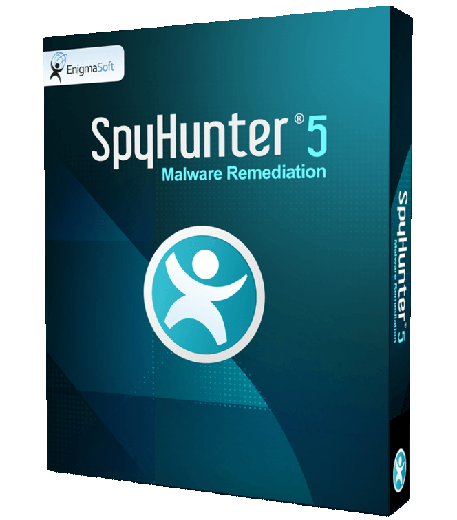
Threats like Boza File Virus keep getting back on the PC if all associated files are not removed. So you are advised to use a powerful Malware Removal Tool to run a thorough scan of your PC and delete all threats at once.
Compatible with: Windows 11/10/8/7 (32 Bit and 64 Bit)
What is Boza Ransomware
Boza Ransomware is a file-encoding virus and the latest variant of the STOP/Djvu virus. Cybercriminals who created this malware keep releasing new variants at regular intervals to avoid breaking their codes. Every time a new variant is launched, the decryption codes get changed. So the chances of creating any universal decryptor which works for all variants are none.

Most of the victims of Boza File Virus reported that their computers got infected after browsing untrustworthy sites like torrents in search of pirated programs. Cracked software usually contains some type of Trojan spoofing the license key authentication process. These Trojans can be easily used to distribute malware. Users normally download such filthy programs on their own and also stop their antivirus protection to install them.
Once installed, this virus instantly starts the encryption process and targets important files, like videos, images, documents, audio, etc. This virus soon takes full control of the victim’s computer and all the personal files, then it leaves the ransom note with instructions for paying the extortion fees.
Boza ransomware is a STOP/DJVU variant
Boza File Virus is a recently detected ransomware-type malware infection that encrypts files on the victim’s computer. This nasty file-encrypting virus belongs to the notorious STOP/DJVU Ransomware family. It is set to corrupt files on the system which it has infected. It uses a powerful encryption algorithm to encode users’ files and after people cannot access their data. File locked by this malware has a custom decryption key which is needed to unlock the data. Creators of this virus demand ransom money to give that key and restore files upon payment.
Once this Boza Ransomware encrypts your files, from that moment forward you can no longer access any of your data. A ransom note named “_Readme.txt” will be placed on your computer (almost in every folder) to remind you of encryption and demand ransom money. This note contains a text message in which hackers ask users to contact using the provided email addresses. They also ask users to pay a hefty ransom amount of $480 to $980 USD in Bitcoins for the decryption tool.
Warning: Do not pay the ransom to the attackers, you may get cheated. Try the suggested malware removal and file recovery methods first explained in the tutorial.
How Boza File Virus works?
As we told you, Boza Ransomware is file-encrypting malware. It uses very advanced RSA and AES encryption algorithms to lock files of infected PC. If you don’t know what encryption is, then you should understand that is a type of protection for digital files. Your data can be locked by a using unique private decryption key generated by the computer. There is no way to duplicate that key and thus it is simply not possible to unlock files without knowing the key.
Viruses like this use such techniques to lock files, so that after encryption, victims will have to pay ransom money to recover their files. This method is used by cybercriminals to blackmail innocent users and force them into paying hefty ransom money. However, even after paying the extortion fee most of the victims don’t et their files back.
Contents of the “_Readme.txt” ransom note left behind
Boza File Virus Ransomware leaves the ransom note “_readme.txt” in all compromised folders. The note explains to victims that all their photos, databases, documents, and other important files are locked. It also stated that they can restore their files for a certain price.
Creators of this virus also offer free decryption of 1 file as proof that they can restore all the files to the previous version. They have set a price for the decryption key of $490 USB in Bitcoins if users contact them and pay the ransom within 72 hours. If not the price is likely to get doubled which is $980 USD. Contact details of hackers are also provided in the ransom note.
Ransom note “_readme.txt” contains the following text message :
ATTENTION! Don’t worry, you can return all your files! All your files like photos, databases, documents and other important are encrypted with strongest encryption and unique key. The only method of recovering files is to purchase decrypt tool and unique key for you. This software will decrypt all your encrypted files. What guarantees you have? You can send one of your encrypted file from your PC and we decrypt it for free. But we can decrypt only 1 file for free. File must not contain valuable information. You can get and look video overview decrypt tool: hxxps://we.tl/t-Oc0xgfzC7q Price of private key and decrypt software is $980. Discount 50% available if you contact us first 72 hours, that’s price for you is $490. Please note that you’ll never restore your data without payment. Check your e-mail “Spam” or “Junk” folder if you don’t get answer more than 6 hours. To get this software you need write on our e-mail: support@fishmail.top Reserve e-mail address to contact us: datarestorehelp@airmail.cc Your personal ID: -
Do Not pay Ransom money to hackers
As many security experts advise, you should not pay any money to cyber criminals. The main motive of hackers is to make an illegal profit and they might never give you a decryption tool. In many cases, we have observed that many victims reported to us that hackers stop all communications after getting the money. Since hackers demand ransom money in Bitcoins, so there is no way to find who you are paying.
Boza file virus ransomware works with a single motive of blackmailing users and forcing them to pay money. Providing a decryption key solely depends on evil hackers that you cannot trust. We suggest you remove this virus completely from your system and then try alternative ways to restore your encrypted files like backup copies or using data recovery software.
Boza Ransomware: Threat Analysis
| Name | Boza File Virus |
| Type | Ransomware, File-Encrypting virus |
| Family | STOP/DJVU Ransomware |
| Extension | .Boza |
| Threat Level | High (Encrypt all your data and Restrict access to your files). |
| Symptoms | Victims cannot access any files on their PC and find Ransom notes asking for money. |
| Damage | It will encrypt your data by adding “.boza” extension to file names and demand ransom money for the decryption key |
| Ransom Note | _Readme.txt |
| Ransom Amount | $490 USD to $980 USD |
| Distribution | It is mainly distributed through spam emails, bundled freeware, porn, or torrent sites. |
| Removal | Download SpyHunter 5 Anti-Malware |
| File Recovery | Download Data Recovery Software |
How did your PC got infected?
It is very important to understand how your system got infected by this virus so that you can protect your PC in the future. The first thing we would like to mention is, that the use of cracked or pirated software on your system can bring viruses to your system. Pirated copy of Windows is also vulnerable to threats because it uses KMSPICO for the activation which is a well-known virus and malware distributor.
Clicking on unknown ads, pop-ups, banners, and push notifications in search of free applications also redirect users to suspicious websites which may host malicious codes. Most freeware programs contain malicious attachments which can be installed silently without users’ permission. Browsing porn sites or sharing files on an unsafe network can also bring this malware to your PC.
How to deal with Boza ransomware?
Boza ransomware is a not common threat and thus it might not be so easy to get rid of this infection. You must seek professional help for the removal of this nasty malware from your system. We advise using both manual and automatic methods to ensure the safe and permanent elimination of this threat. For that, you will need to use a Powerful Anti-Malware Tool that finds and remove this infection at once. We have created a detailed guide with step-by-step instructions to help you in removal process.
Anti-malware tools can easily detect and remove this infection from your and can also block this malware or similar threats in the future. You need to run a thorough scan of your PC and remove all the files and elements related to this virus. Do not try to format or reinstall your Windows because you can never restore your files.
Once the removal of this infection then you can create a backup of all the encrypted files and store them on any external hard drive or the cloud drive. Then if you have any backup of your precious files then you can use them to restore your files. If you don’t have a backup then you can wait for the decryption tool or try a good Data Recovery Software to help you recover your files.
How To Remove Boza File Virus
Follow this guide carefully to remove this virus completely from your system. Below you can find step-by-step instructions on how to effectively get rid of this nasty threat easily. Removal of threats like Boza File Virus is never easy, so we have simplified the process for you in several small steps.
Quick Summary of Removal Instructions:
- Automatic Boza Ranomware Removal Guide
- How To Decrypt .Boza Files
- Manual Boza File Virus Removal Guide
- Start PC in Safe Mode With Networking
- Kill Malicious Process From Task Manager
- Remove Boza Virus From Registry Editor
- Remove Boza Virus via system restore
- Prevent Boza Virus in Future
Please Bookmark This Page by pressing the {ctrl+D} button or print it out on paper before you start the removal process because you may need to restart your PC or browser.
Automatic Boza Ransomware Removal Guide
It can be hectic to remove threats from an infected PC but the use of powerful Anti-Malware can make it quite easy. SpyHunter anti-malware can help you to remove Trojan, Ransomware, Spyware, Adware, PUPs, etc. easily. You can scan your system for Boza File virus and all other hidden threats at once. All you need to do is to download this software and run a new scan on your PC.
It will find all the threats and viruses in no time and save you lots of time and effort. This amazing software also provides 24X7 customer support and one-on-one Spyware HelpDesk support for Custom Malware removal. Advanced System Guard feature detects and removes threats in real time. It has a very User-Friendly Interface and regular Malware definition updates make it most effective against the latest attacks.
How SpyHunter 5 Anti-Malware Works
- You will begin by downloading the software on your system for which you have to click on the below download button.
Geek’s Recommendation
Threats like Boza File Virus keep getting back on the machine if all associated files are not removed. So you are advised to use a powerful Malware Removal Tool to run a thorough scan of your PC and delete all threats at once.
SpyHunter 5 Anti-Malware offers a 7-day fully-functional Free Trial. Credit card required, NO charge upfront. No charge if you cancel up to two business days before the trial period ends. Read SpyHunter 5 Review, and Free SpyHunter Remover details.
- Once the software has been downloaded, double-click on SpyHunter-Installer.exe to install the Anti-Malware program on your PC and proceed with the setup.

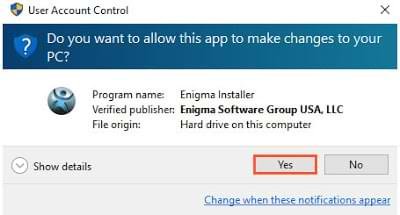
- After installation, you will need to launch the Anti-Malware application. From the welcome screen click on the Start Scan Now button to initiate a new scan of your PC.
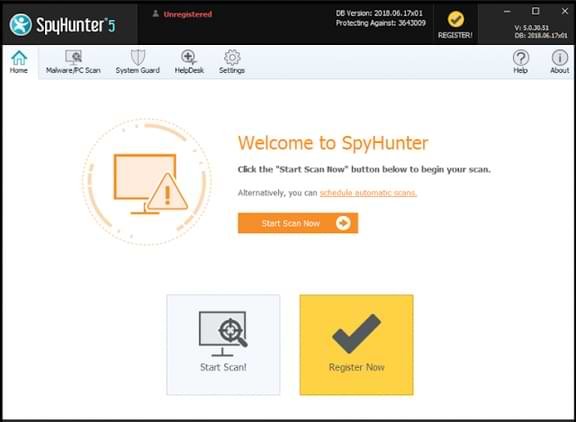
- Once the scanning process begins, it will take some time to run a thorough diagnostic of your PC and find all hidden threats and malware.
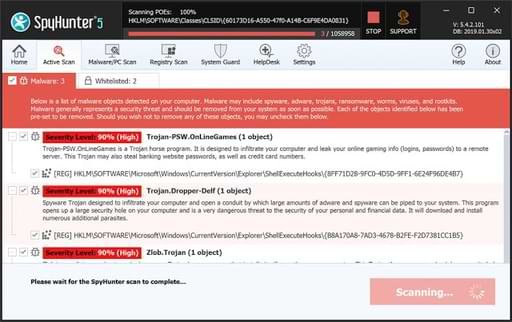
- Soon you will find a complete list of all the threats on your system screen. Then you will need to click on the Next button to delete all the viruses.
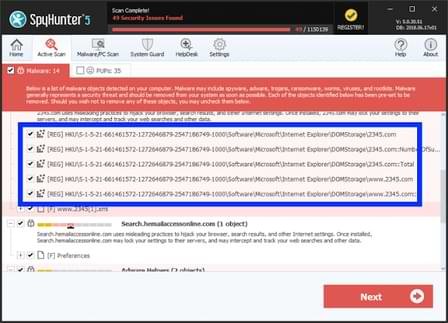
How To Decrypt .Boza Files
As there is no Boza ransomware decryptor available, you will need to use alternate options to restore your files. The first one is to use the backup. If you have created a backup of your important files then it is going to be quite easy. However, if you don’t have any backup files or they also got encrypted by the virus then you will have to try a data recovery software.
We recommend using Stellar Data Recovery software because it is a powerful and trusted data recovery software. Paying ransom money is not ideal because it will only motivate hackers to carry out more attacks. You can wait for any free decryptor to be launched but it can take forever. Download the free trial version of data recovery and scan your PC for files. It may be able to recover some of your files and save you lots of money.
- Click on the below download button to get started instantly with the data recovery process on your PC.
Download Data Recovery Software Now
- After the download click on the installer file and complete the software installation. Then launch the application and select the Data type to recover, and click the Next button.

- After the selection of data, you will need to select the location from where you want to recover data. Choose the location and then click on the Scan button.
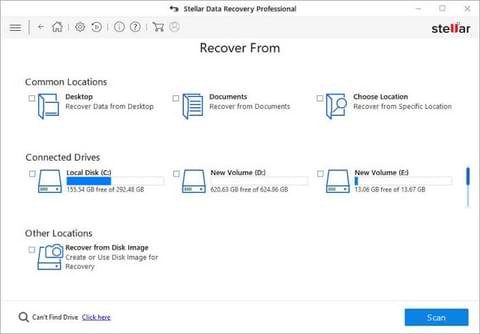
- The software will take some time to scan your system. You will see a list of all the files that can be recovered. You can preview them or click on the Recover button to save them.
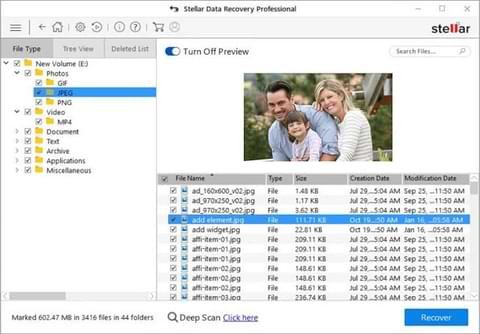
Manual Boza File Virus Removal Guide
Attention! For the safety of your system, please confirm a few things before you begin manual removal:
- You have done this before, which means you have experience in removing the virus manually;
- That you know your way around PC and all necessary processes and applications;
- You know about Registry entry and the Serious repercussions of any mistake;
- Make sure you can reverse any mistake made during virus removal.
If you don’t attain any of the above standards, then manual removal could be a very risky idea. It is most likely best for you to use the SpyHunter 5 Anti-Malware which is totally secure and efficient method.
SpyHunter 5 Anti-Malware offers a 7-day fully-functional Free Trial. Credit card required, NO charge upfront. No charge if you cancel up to two business days before the trial period ends. Read SpyHunter 5 Review, and Free SpyHunter Remover details.
Start PC in safe mode with networking
- Click on the Windows and R keys together on your keyboard to open the Windows Run Box.
- Now you will need to type in MSConfig and then click the OK button.
- The System configuration settings box will appear on your computer screen.
- Click on the Boot tab, check the Safe Boot option, and select the network box,
- Finally, you will have to click on Apply and then press the OK button.
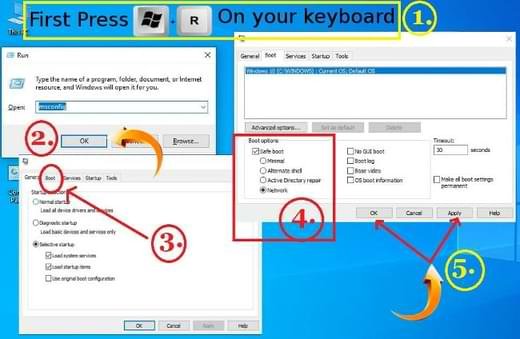
Kill Malicious Process From Task Manager
- Open the Windows Rub box again on your PC by pressing the Windows and R keys together on your keyboard.
- This time you will have to type in taskmgr and then click the OK button to open Windows Task Manager. Look for any unknown or malicious running on your system.
- Select the process which is taking lots of systems resources and then click on the End Task button.
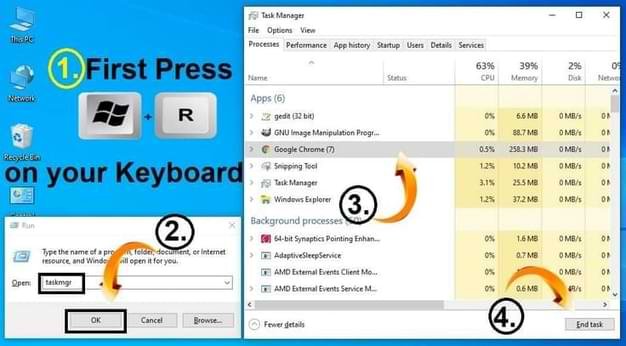
Uninstall Boza Virus from Control Panel
- Again you will need to open the Windows Run Box, so press the Windows and R keys together.
- This time you need to open the Windows Control Panel, so type in appwiz.cpl and then click the OK button.
- Programs and Features windows will appear on your computer screen with a list of all the installed applications.
- Now you need to look for any unknown or Boza Ransomware related program and then Uninstall it from your PC.
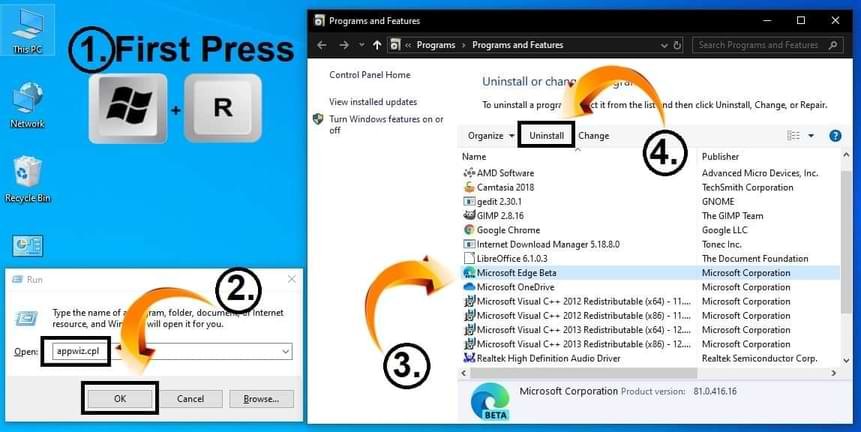
Remove Boza Virus From Registry Editor
- Again open the Windows Run Box on your PC by using the Windows and R keys.
- To open the Windows Registry Editor, type in Regedit and click the OK button.
- Now you will have to find the Boza Ransomware related registry files and remove them.
- Press CTRL and F keys together on the keyboard to start a Find query.
- Type the virus name and click on Find Next button to find malicious entries and delete them.
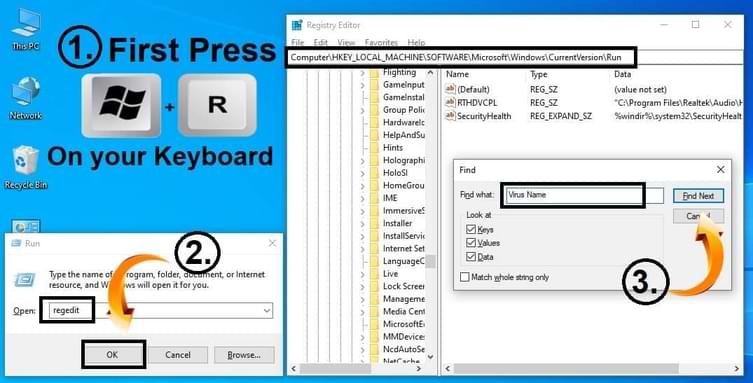
Warning: Meddling with Windows Registry files might not be a good idea if you don’t have advanced knowledge about registry files. Deleting the wrong file can break down your entire system. Proceed at your own risk, or just skip this step. You can choose the Automatic Removal method and avoid all the problems.
SpyHunter 5 Anti-Malware offers a 7-day fully-functional Free Trial. Credit card required, NO charge upfront. No charge if you cancel up to two business days before the trial period ends. Read SpyHunter 5 Review, and Free SpyHunter Remover details.
Remove Malicious IP addresses from Windows Hosts Files
- To open the Windows hosts file, simply press the Windows and R keys together on the keyboard.
- Type C:\Windows\System32\drivers\etc in Run Box and then click the OK button.
- Now you will need to access the Windows hosts file using Notepad.
- Most threats add malicious IP addresses here to automatically connect to remote servers.
- Delete all the malicious IP addresses below the localhost and save the file.
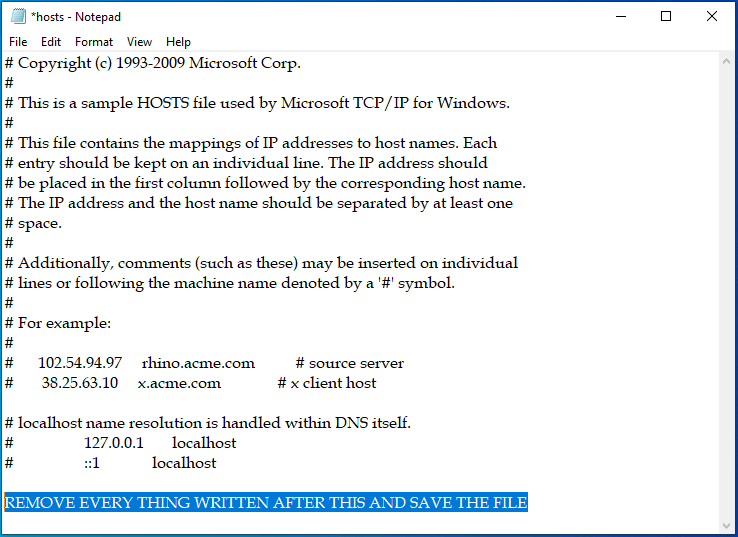
Delete Virus related files from your PC
When malware infects your system, it normally creates several malicious files and spread them at different locations. After you remove the malware, these leftover files help them to get back to your computer. Remove all virus related files at once by following the below instruction :
- Open the Windows Run Box again by using the Windows and R keys together.
- Now you will open the below paths one by one using the Run Box and remove malicious files.
- %AppData%
- %LocalAppData%
- %ProgramData%
- %WinDir%
- %Temp%
For the first four options, look for any recent folder related to the Boza File Virus and remove them. For the Temp folder, you can delete all the files at once. Use Ctrl, Shift, and Delete keys together for permanent removal.
Remove Boza Virus via system restore
- You will again need the Windows Run Box, so press the Windows and R keys together.
- Open the Command Prompt by typing in cmd and then clicking the OK button.
- Type cd restore and press Enter, then type rstrui.exe and press Enter.
- The System Restore window will get opened instantly then click on the Next button.
- Choose a System Restore point you have created in the past and click the Next button.
- Finally, when you will hit the Yes button, the system restoration process with start immediately.

Note: System restore to remove a virus will only work if you have a restore point set on your PC. Otherwise, no changes will be made to your system and it will not remove any threats. Be advised, restoring the computer to a previous version does not always guarantee virus removal. Most viruses delete restore points, so don’t get disappointed if this trick does not work for you.
Prevent Boza Virus in Future
- Get a powerful Anti-Malware or Anti-virus to fight cyber threats. Free versions do not offer the best protection and cracked security programs can do more damage than good.
- Always keep your Windows firewall active, and your OS updated along with other important programs. Only download updates from official sites or reliable sources.
- Check HTTPS before entering your email, password, credit card details, etc. to any site. Do not visit sites that do not have SSL security. Also, don’t forget to Enable Phishing and Malware protection in Browser.
- Do not download or install any type of pirated software, games, or illegal patches. Avoid using shady sites to acquire freeware programs because they often use software bundling. Never install a program that asks you to inactivate your anti-virus software.
- Avoid opening spam emails from unknown senders. Always scan all the email attachments before opening them. Never click on any suspicious links with some too good to be true offers.
- Connecting your PC or mobile devices to unsafe public Wi-Fi is not a good idea. You can also avoid unwanted threats coming from malicious sites by using a VPN to spoof your connection.
- Keep regular backups of all your important data on external hard drives or cloud drives to avoid data loss in case of a ransomware attack. Also, create a system restore point on your system for security purposes.

Leave a Comment